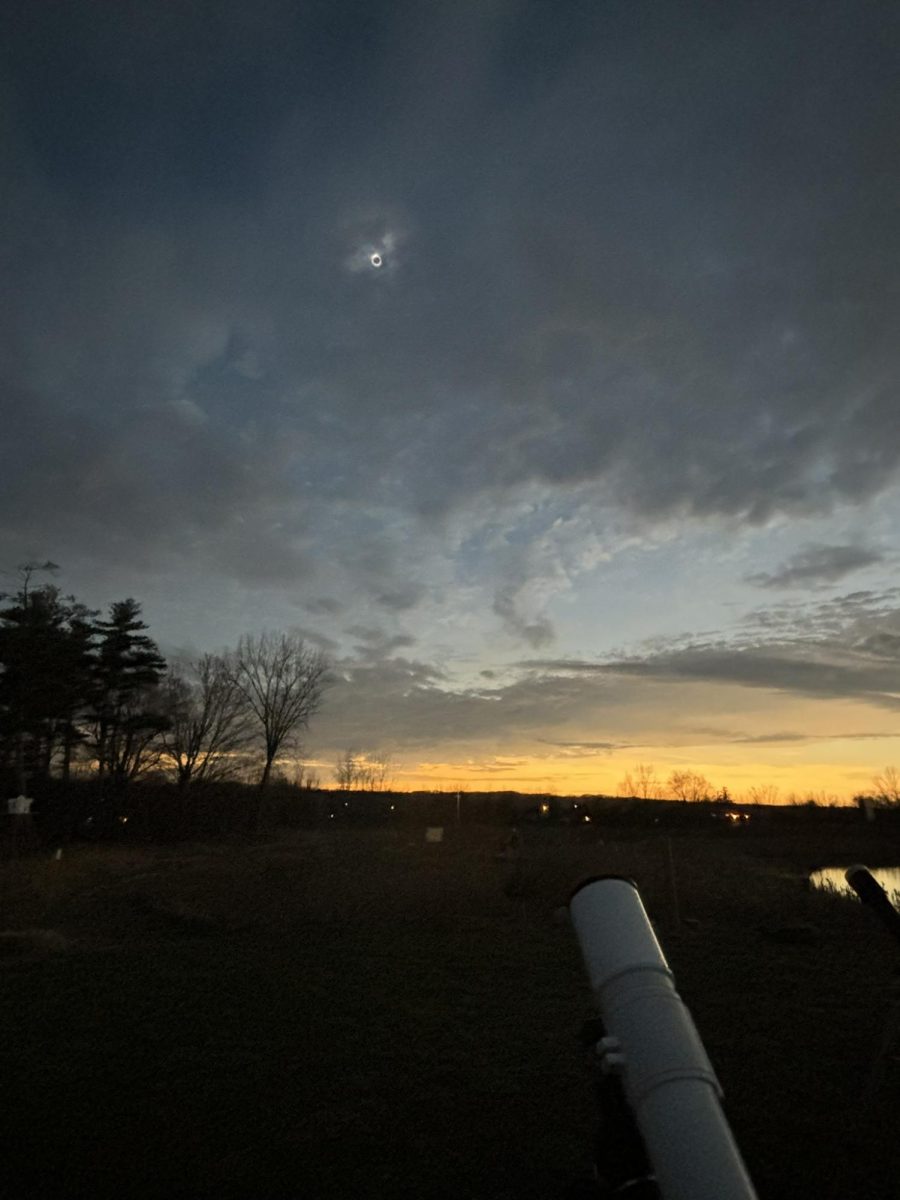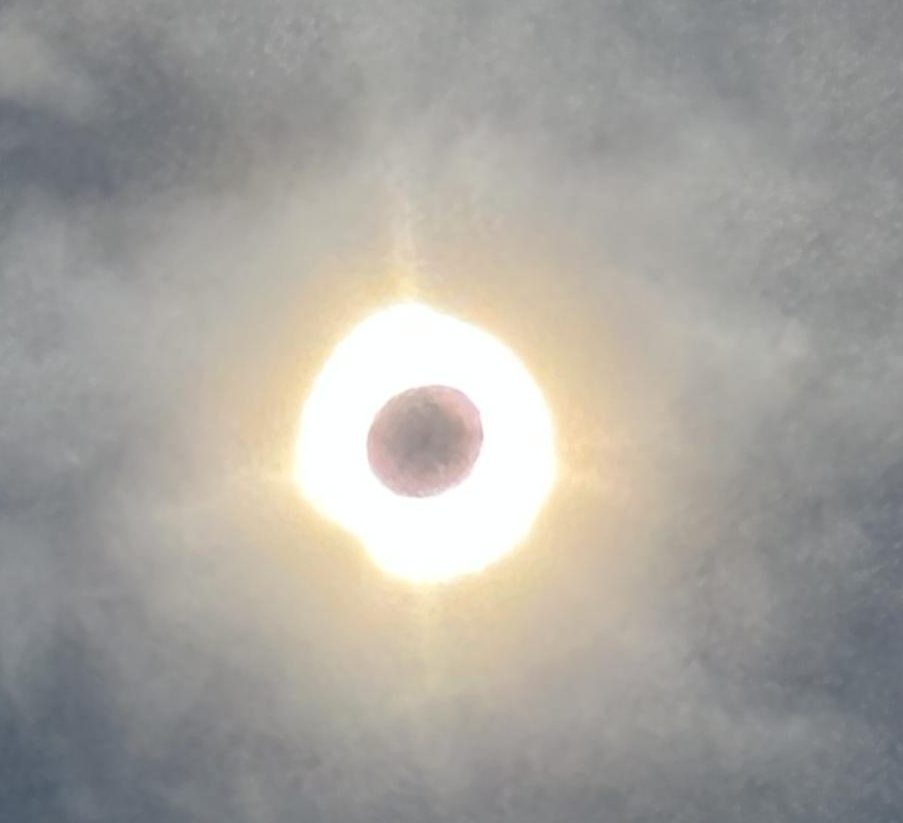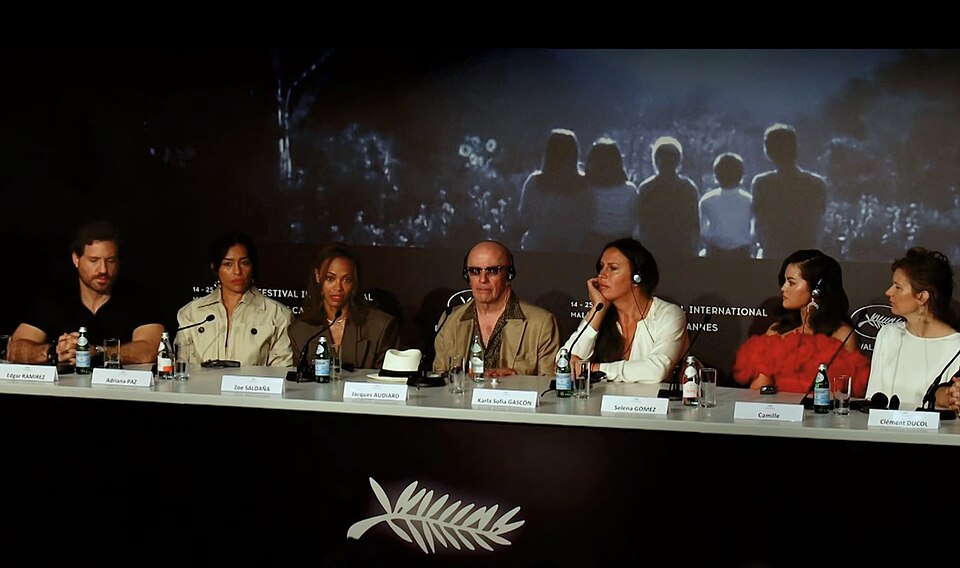On Monday April 8th, 2024, a large swath of the continent of North America experienced a total solar eclipse for the first time since August 21st, 2017, and for the last time until August 23rd, 2044, which is a period of twenty years.
The Great North American Eclipse is known as the path of totality where the path of the Sun is completely blocked by the Moon. It began on Mexico’s Pacific Coast and traveled Northwest from its origin through the Southwestern states of Texas and Arkansas, moving along a straight path through the Northeastern states of Vermont, New Hampshire, and Maine. The path then continued its Northeastern trajectory all the way to Newfoundland, Canada, slicing the entire continent of North America corner to corner during a period of over six hours.
Nearly all the portions of North America not in the path of totality experienced a partial eclipse, weather conditions permitting.
The HCC Times Staff Writer and amateur astronomer Timothy Winans traveled to Grimsby, Ontario in Canada with fellow HCC amateur astronomer Evan (EJ) Reynolds to observe and report on The Great North American Eclipse.
Solar eclipses are widely viewed by the public for their beauty and surreal experience of the ever-present Sun being completely blocked, leaving the observer in complete darkness. Not as widely known is the historical and scientific significance of total solar eclipses in the scientific field of physics.
Many people are aware of Albert Einstein and the Theory of Relativity, which has been one of the most widely known, accepted, and praised scientific theories ever hypothesized. Conversely, it is also one of the least understood. First, it is important to state that a scientific theory is not a theory as defined in common colloquial language. Such as stating my theory that the author of this article has no idea what they are talking about, a theory in science is a testable explanation of the natural world that can be repeatedly tested using the scientific method.
What makes a great scientific theory is when repeated testing continually confirms a hypothesis to the point that it can be used to predict and further explain events in the natural world. This is why the Theory of Relativity lives up to its reputation of being one of the greatest theories in science, and through the observation of a total solar eclipse we can empirically see why.
Albert Einstein’s 1915 publication of his Theory of General Relativity lists three observational tests that distinguished General Relativity from Newtonian space-time. The first required observation involved the rate of precession involving the orbit of Mercury around the Sun; the second observation needed was a predicted amplitude of bending by light-ray from a background star passing the Sun; the third observation is gravitational red-shift of a particle moving through gravitational potential.
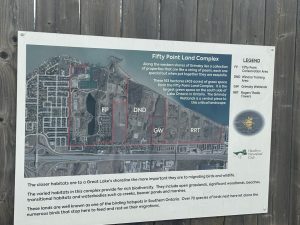
The second observation involved the bending of light from a background star passing the Sun in what made an entirely unknown Swiss patent clerk into one of the most famous scientists who ever lived. On November 7th, 1919, the results of a total solar eclipse expedition by astronomers Arthur Eddington, Dyson, and Davidson were announced in London, England. It was shown that two out of three of the expedition’s results conformed to Einstein’s predictions while the third was determined to be faulty data.
The result propelled Einstein to international acclaim, and changed science and the world forever: this is the historical significance. The scientific significance of this is the discovery of gravitational lensing, the curvature of space time by a gravitational lens which is a massive celestial object such as our Sun just as predicted by Einstein, and witnessed by Eddington.
The effect of gravitational lensing is not just a scientific oddity, it is used as cosmic magnifying glass allowing astronomers and scientists to see at distances and clarity that would otherwise not be possible.
The HCC Times was on the ground in Grimsby, Ontario for the Total Eclipse, staying in The Casablanca Hotel, monitoring the weather conditions and the cloud cover in order to find the best observation spot from a pre-selected list of locations garnered from satellite imagery.
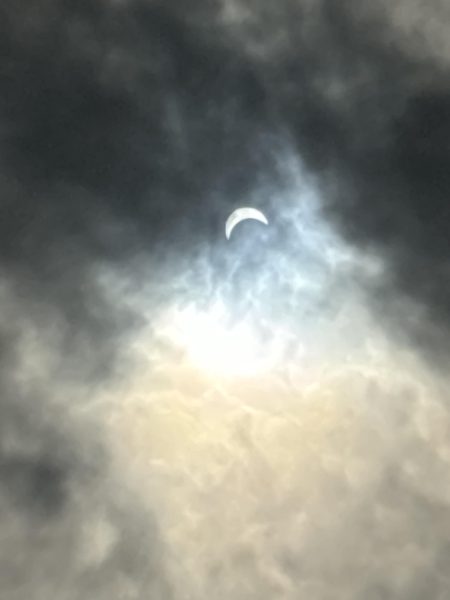
The cloud cover was very heavy on the morning of April 8th, and weather predictions showed a chance that the conditions would begin clearing by the time of partial eclipse.
The location that was ultimately selected was the Grimsby Wetlands which is located within the Fifty Point Land Complex that sits on the shore of Lake Ontario. The Grimsby Wetlands is 20-acre property managed by the Hamilton Naturalists Club. The location was selected for optimal viewing conditions along with the presence of a large diverse population of birds that were present during our reporting. There are over 70 species of birds that nest in the Grimsby Wetlands and this does not include the migratory birds.
Around 1pm Eastern Standard Time (EST) we began setting up the equipment on the site of the Grimsby Wetlands alongside a handful of fellow eclipse observers from Toronto, Ontario.
Timothy Winans and Evan Reynolds set up two telescopes equipped with charge coupled device cameras hooked to laptop computers. The cloud cover at this point prevented us from getting a proper alignment with the Sun’s position, and the conditions were starting to appear as if the total eclipse would not be visible by the time it was going to begin around 2 pm EST.
The decision was made to stay in our current position and hope for the cloud cover to pass in time for the eclipse to be seen. This decision paid off when the cloud cover began permitting a view of the partial eclipse in between passing clouds.
The Moon continued to totally engulf the Sun for around an hour, and as the Totality of Eclipse began, we were able to remove our eclipse glasses.
It was the middle of the afternoon and it was totally dark outside as if it were nighttime. The sunlight could be seen in the distance in what looked like a 360 degree sunset that completely encompassed darkness. The birds that were chirping all day long in the wetlands suddenly were silent, and the temperature dropped.
For around four minutes we experienced a once-in-a-lifetime awe-inspiring feeling that we are all small spacetime threads in the massive tapestry of the universe.
For those interested, Evan Reynolds was also featured in an article by the GreenBelt News Review Vol. 87, issue No. 22 page 16 in reference to the eclipse trip.
